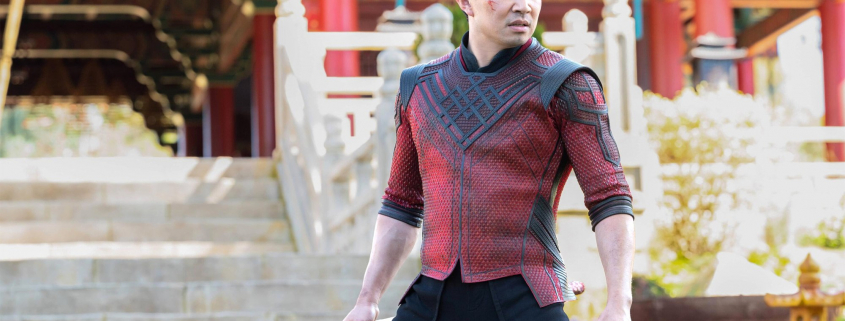Shang-Chi brings humanity to Marvel

If there was ever a movie to leave you completely exhausted after sitting in a reclining lounge chair for two hours, “Shang-Chi and the Legend of the Ten Rings” would be it. Holding true to the superhero genre, “Shang-Chi” has plenty of action to go around, including several 10-minute fight sequences and a monster-versus-monster finale that puts “Godzilla vs. Kong” to shame.
While the CGI artists are hard at work behind the scenes, actor Simu Liu (who plays titular character Shang-Chi) puts on the performance of a lifetime on screen. Previously known for playing Jung, the estranged son in Canadian comedy “Kim’s Convenience,” Liu sheds his sitcom past to take up the role of serious superhero hunk in thrilling fashion.
Liu’s goofy counterpart Katy, played by the ever-comical Awkwafina, provides the comedic relief that this film often desperately needs at points where the action seems to overtake the storyline, as well as the classic “oh-my-god-you’re-a-superhero” jaw drops that every Marvel movie requires.
After years in pre-production, director Destin Daniel Cretton (“Just Mercy”) had a big task on his hands with bringing the first Asian American-led Marvel movie to life. It was important not to reduce Shang-Chi’s character to a one dimensional kung-fu master (as many poor attempts at Asian American representation have done before) but instead try to incorporate various aspects of Chinese culture and traditions without reverting to stereotypes, Cretton said. This was done successfully by forgoing the typical East-versus-West narrative that older versions of the “Shang-Chi” comics had focused on and, instead, creating a more intimate son-and-father conflict.
“Shang-Chi” concentrates on humanizing and providing a background to its hero more than most Marvel movies. We learn about Shang-Chi’s (or Shaun, his painfully similar American name) backstory through the abundant use of flashbacks and are given ample time to sympathize with him and his struggles. Even the antagonist of this film, Mandarin (Tony Leung), Shang-Chi’s father, is a morally complicated character that viewers are given plenty of reason to comprehend.
One of the most fascinating aspects of this film is its incorporation of martial arts, despite not being an entirely martial arts-focused movie. Michelle Yeoh, whom some viewers might recognize from “Crazy Rich Asians,” quickly becomes one of the most endearing characters as she teaches our young hero how to channel the power of nature into his fighting.
The movie works best when it’s contained to a simple family drama, but the story starts to wander when it shifts into a battle for humanity between thousands of miniature flying soul-suckers and an antsy prehistoric dragon. Yes, the CGI work is incredible, and yes, there is an epic fight scene, but once we understand the good-versus-evil monster situation, the plot takes a turn for the predictable.
As one of the first movies in the MCU’s new Phase 4, viewers get a glimpse into what the Marvel universe will look like after the “Infinity Saga.” We are introduced to one of its newest superheroes, and it’s a welcome sight to see Marvel making an effort to add more diversity to its roster, especially with the release of “Eternals” in two months, which is being hailed by fans and critics alike as the most inclusive Marvel film yet.
While “Shang-Chi” is a win for representation after a year of strain for the Asian American community following an increase of Sinophobia and hate crimes, it should not be reduced to or simply known for being the first Asian American-led superhero movie. It is a genuinely impressive and pioneering movie in the sense that it has more layers than a large number of prior Marvel releases.
While perhaps a tad overdone in its attempted scale, it’s the individual personalities that elevate this movie. It’s not the attempted soul-sucking of a colossal lake-dwelling dragon that wins the audience over; it’s the playful banter between Katy and Shaun as they argue over who gets to valet a BMW.
Watch out Avengers, there’s a new kid in town.

